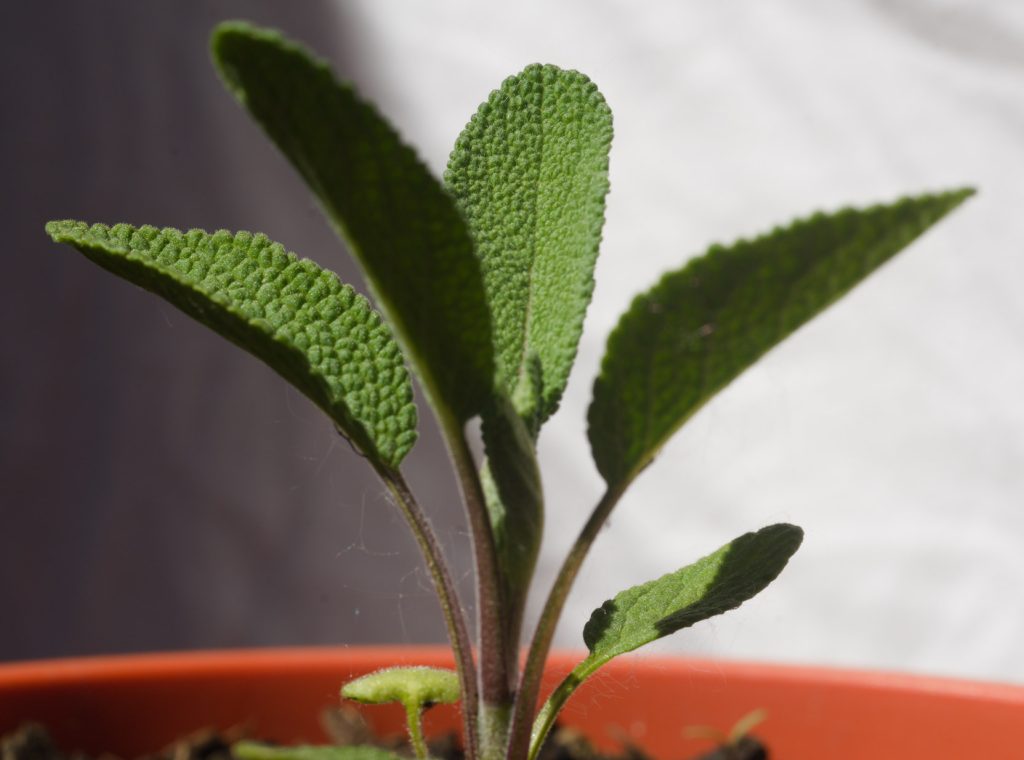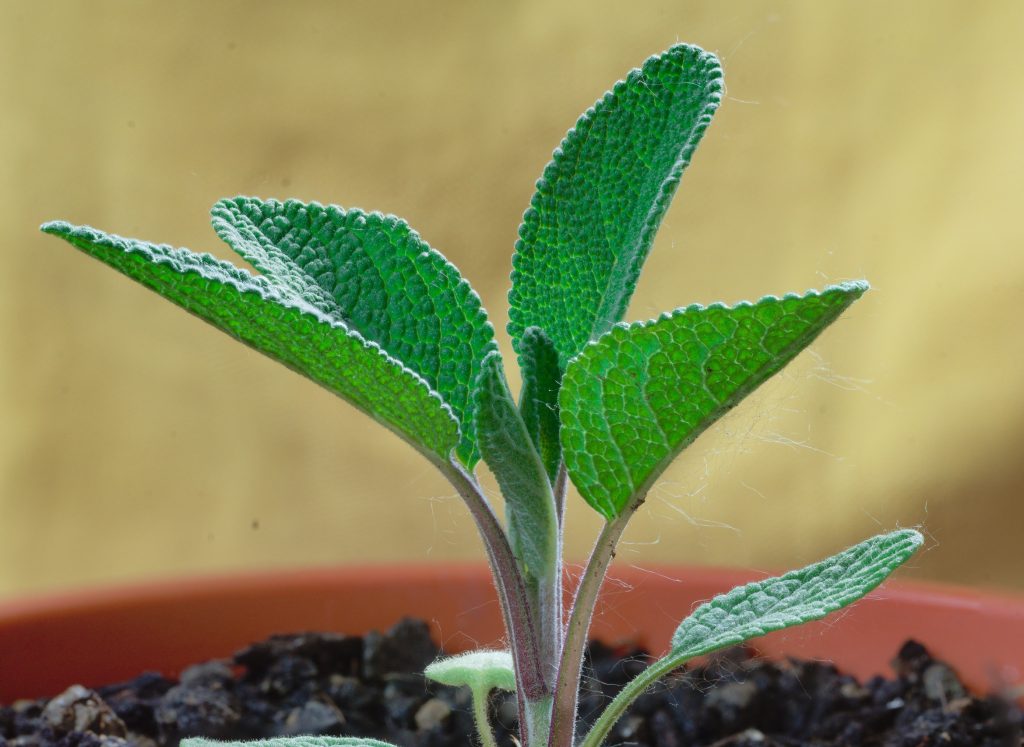Sage (Salvia officinalis)
Sage, an aromatic perennial herb, thrives in Mediterranean climates and is widely known for its culinary and medicinal uses. It grows up to 2 feet (0.6 meters) tall and features woody stems, gray-green leaves, and purple or blue flowers that bloom in late spring and early summer. The leaves are soft, velvety, and highly aromatic, making them a staple in cooking and herbal remedies.
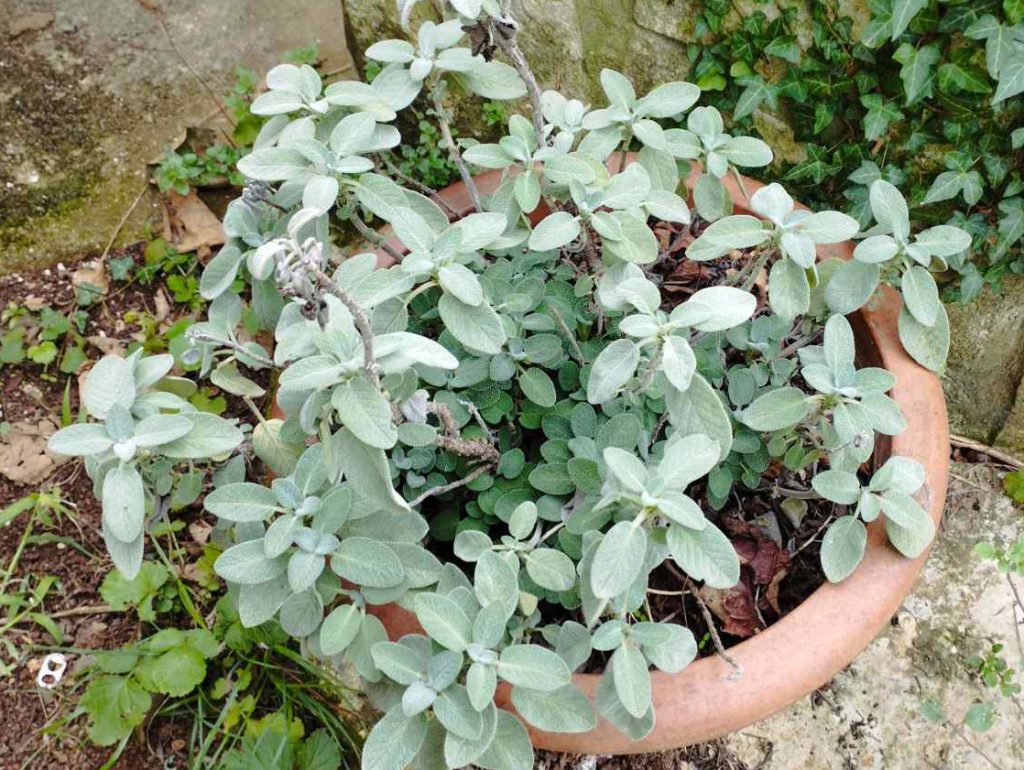
Sage is drought-tolerant and prefers well-drained soils and full sunlight. It often grows in rocky or sandy environments. Ancient civilizations revered sage for its healing properties, using it to treat ailments like sore throats and digestive issues. In gardens, sage serves as both an ornamental plant and a companion plant, helping to repel pests. Its strong fragrance attracts pollinators such as bees and butterflies, making it a valuable addition to any garden.
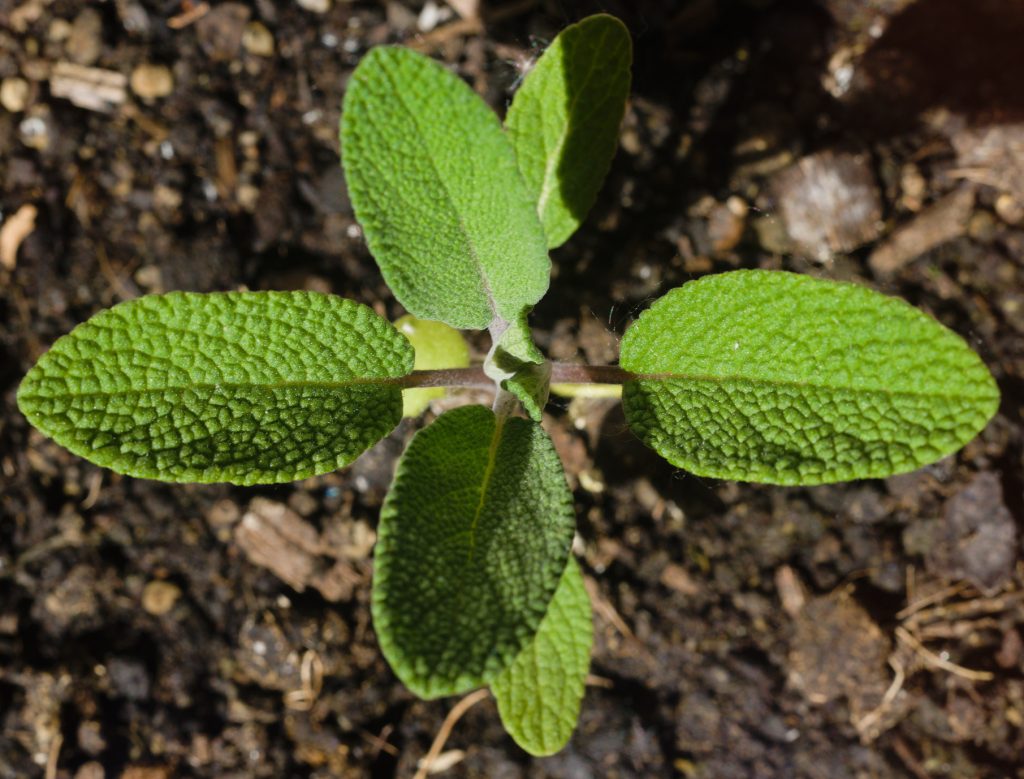
Scientific Classification of Sage
| Kingdom | Plantae |
| Clade | Angiosperms |
| Clade | Eudicots |
| Order | Lamiales |
| Family | Lamiaceae |
| Genus | Salvia |
| Scientific Name | Salvia officinalis |
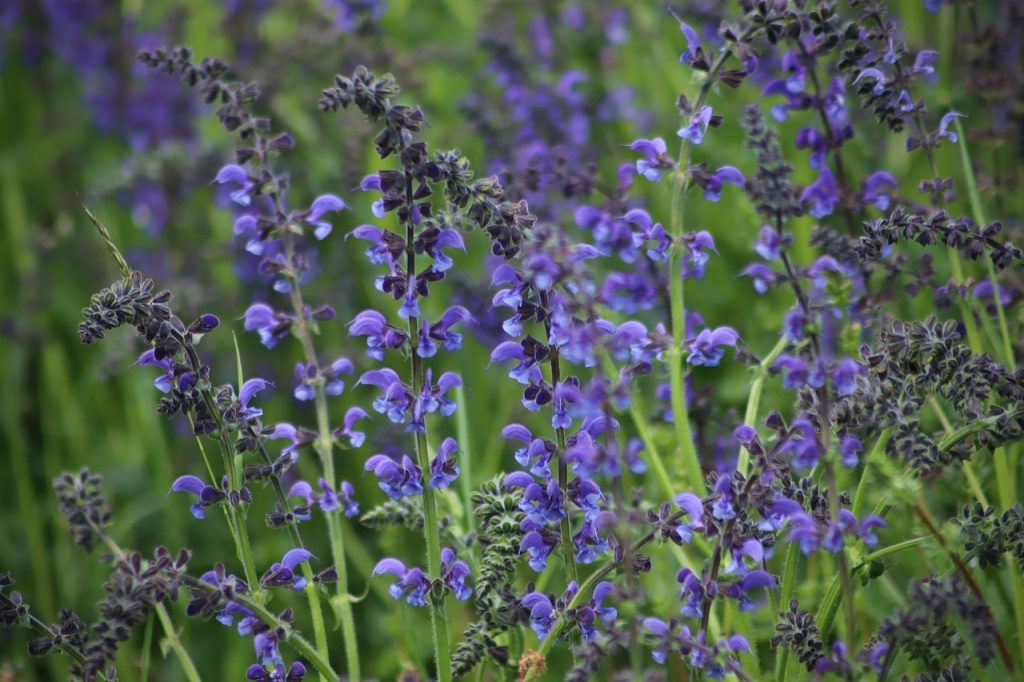
Quick Information
| Plant Type | Perennial herb |
| Identification | Height: Up to 2 feet (0.6 meters) tall Leaves: Gray-green, soft, velvety, aromatic Stem: Woody, branching stems Flowers: Purple or blue, bloom in late spring and early summer Roots: Fibrous root system Growth Habit: Bushy, spreading form Crown: Rounded and compact |
| Distribution | Native to the Mediterranean region |
| Habitat | Grows in rocky, sandy soils, often found in dry, sunny areas |
| USDA Hardiness Zone | 4 through 9 |
| Growth Rate | Moderate; grows 12-24 inches (30-60 cm) per year |
| Lifespan | Long-lived perennial; typically 5-10 years |
| Growing Conditions | Sunlight: Full sun Soil: Well-drained, sandy or loamy soils Water: Low water needs, drought-tolerant |
| Drought Tolerance | High; well-adapted to dry Mediterranean climates |
| Diseases | Susceptible to root rot in overly wet conditions |
| Pests | Generally pest-resistant, though aphids and spider mites can occur |
| Reproductive System | Produces seeds and can also propagate through cuttings |
| Propagation | Through seeds, cuttings, and division |
| Wildlife Value | Attracts pollinators like bees and butterflies |
| Uses | Culinary herb, medicinal plant, ornamental landscaping |
| IUCN Conservation Status | Not currently listed as threatened |
